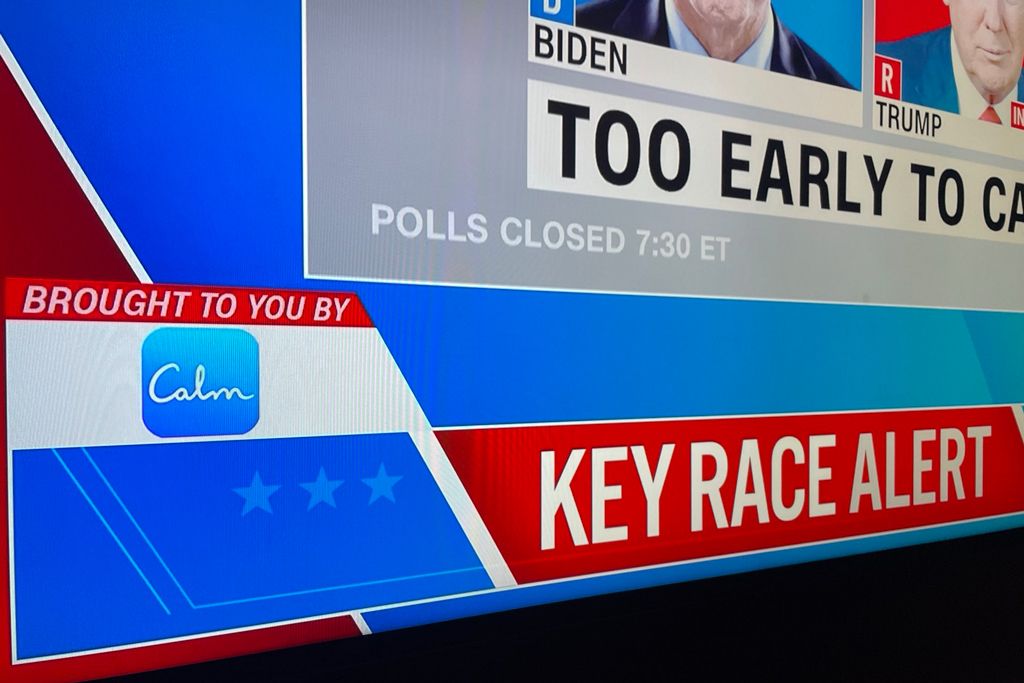 On U.S. Election Night, November 3, 2020, CNN’s John King stood in front of the “Key Race Alert” screen, announcing state-by-state polling results with the oft-used headline, “Too Early To Call.”
On U.S. Election Night, November 3, 2020, CNN’s John King stood in front of the “Key Race Alert” screen, announcing state-by-state polling results with the oft-used headline, “Too Early To Call.”
That persistent media-moment was stressful for the millions of voters watching the multiple hairline-close battles from state to state.
Then there was that company logo strategically placed at the lower left corner of the screen, as in “Brought to you by Calm.”
Calm is but one of a growing portfolio of tools that health citizens can use to manage anxiety and stress, get to sleep (and stay sleeping), and bolster mental well-being.
This is one of nine key trends identified the annual go-to primer on the wellness market from the Global Wellness Institute. I’ve explored the mine of insights the GWI team has unearthed for the new year, and will focus on one that has fast-grown as the converging forces of the COVID-19 pandemic, economic recession and household financial downturn, and rising anxiety for social and civil justice have, together, wreaked havoc on our mental and behavioral health.
 GWI identified nine major wellness trends for 2021:
GWI identified nine major wellness trends for 2021:
- Hollywood and the entertainment industries jumping into wellness
- The future of immune health
- Spiritual and numinous moments in architecture
- Just breathe!
- The self-care renaissance
- Adding color to wellness (on diversity and inclusion)
- Resetting events with wellness
- Money out loud (on financial wellness)
- 2021 as the year of the travel-reset.
I’ll focus on #1, although mindfulness and mental health play into every single one of the eight other trends in the GWI line-up.
“Hollywood?” you ask? “What’s that got to do with wellness?”
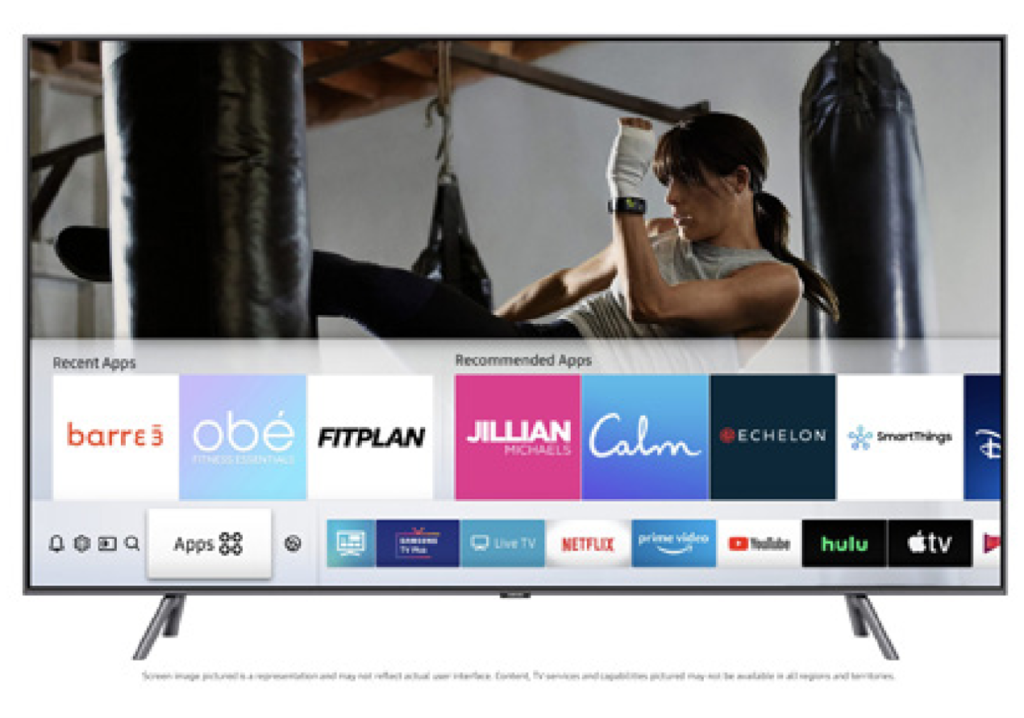 A lot, as it turns out, based on Beth McGroarty’s analysis of the entertainment sector’s “jump into wellness.” That jump was accelerated during the pandemic, as people staying home has led to new work- and life-flows for jobs, exercise, cooking, learning, and staying even-keeled in the face of isolation, economic challenges, and political/social stress.
A lot, as it turns out, based on Beth McGroarty’s analysis of the entertainment sector’s “jump into wellness.” That jump was accelerated during the pandemic, as people staying home has led to new work- and life-flows for jobs, exercise, cooking, learning, and staying even-keeled in the face of isolation, economic challenges, and political/social stress.
This was a perfect storm bolstering the home as the health hub, which I’ve been focused on for years. Our homes are our cineplexes-shrunk-down, our gyms via apps and connected fitness devices, and our food-as-medicine kitchens.
“Streaming media and wellness are the pandemic winners,” Beth notes. “Welcome to the new media-wellness convergence.”
Beth plots out the history of wellness on TV, from the Jack LaLanne Show to Jane Fonda’s Workout on VHS tape. More recently, The Biggest Loser was early wellness+reality TV.
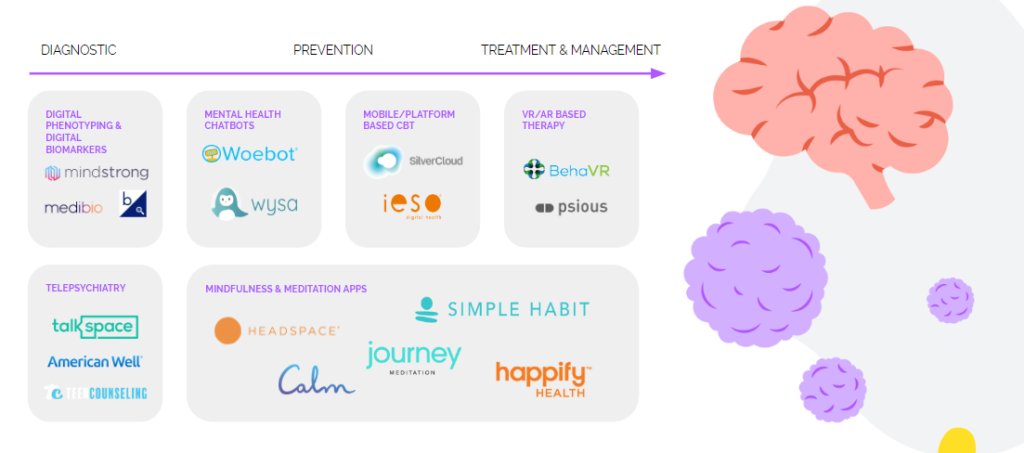 See the TV here, from Samsung: it’s “smart,” and streamlines the user’s on-ramp to wellness apps like Barre3 and Calm and Echelon, et al. Samsung’s announcements at CES 2021 included many healthy things as well as health-adjacent ones, such as expanding the Samsung Galaxy Watch blood pressure and ECG tracking via the Health Monitor app to 31 more countries to growing the Smart Things Cooking line for the healthy kitchen.
See the TV here, from Samsung: it’s “smart,” and streamlines the user’s on-ramp to wellness apps like Barre3 and Calm and Echelon, et al. Samsung’s announcements at CES 2021 included many healthy things as well as health-adjacent ones, such as expanding the Samsung Galaxy Watch blood pressure and ECG tracking via the Health Monitor app to 31 more countries to growing the Smart Things Cooking line for the healthy kitchen.
But back to mental health, because it is indeed the epidemic within the pandemic.
GWI points out that Calm had 100 million downloads as of December 2020, doubled the company’s valuation to $2 billion. Headspace with 65 million users across 110 countries had a valuation of $320 million. These two apps fall into what HealthXL characterizes as mindfulness and meditation apps in the larger behavioral and mental health digital ecosystem, shown in their chart here. Along with this category addressing mental wellness, HealthXL includes telepsychiatry (telehealth focused on psych-therapy), digital biomarkers, chatbots, cognitive behavioral therapy (CBT), and VR/AR based therapy, which has been found especially useful for PTSD and other anxiety-related conditions.
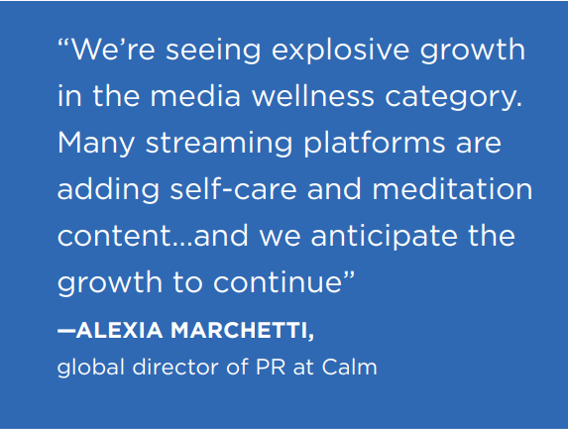 The Hollywood/entertainment connection sees Calm and Headspace morphing into music streaming, the latter engaging John Legend to join Headspace Studios to create music for them. Headspace also has a “Chief Music Officer.”
The Hollywood/entertainment connection sees Calm and Headspace morphing into music streaming, the latter engaging John Legend to join Headspace Studios to create music for them. Headspace also has a “Chief Music Officer.”
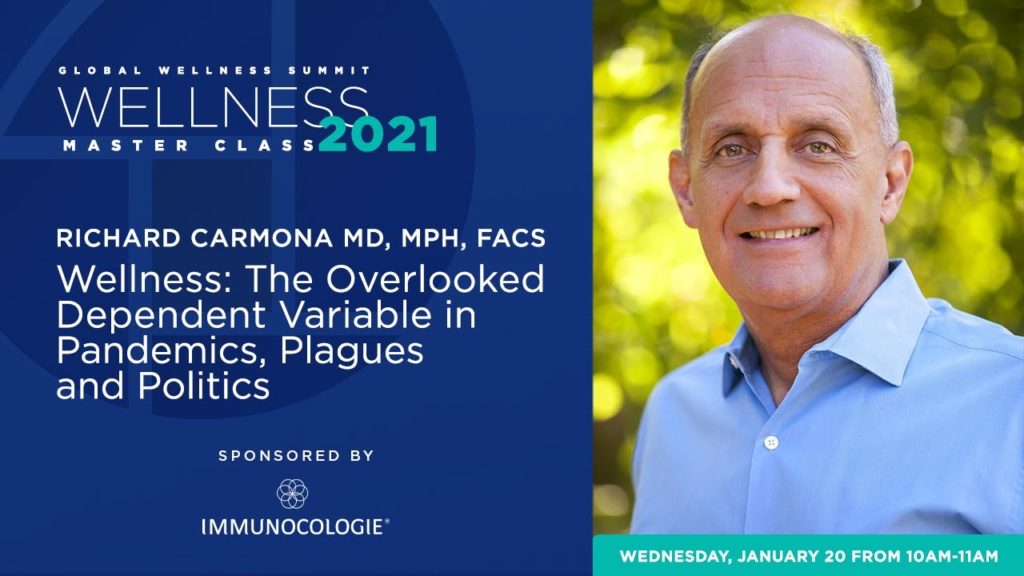 Health Populi’s Hot Points: The Global Wellness Summit hosted a Master Class session earlier this month with Dr. Richard Carmona, former U.S. Surgeon General in the President George W. Bush administration beginning 2002. Dr. Carmona’s talk focused on wellness — “the overlooked dependent variable in pandemics, plagues and politics.”
Health Populi’s Hot Points: The Global Wellness Summit hosted a Master Class session earlier this month with Dr. Richard Carmona, former U.S. Surgeon General in the President George W. Bush administration beginning 2002. Dr. Carmona’s talk focused on wellness — “the overlooked dependent variable in pandemics, plagues and politics.”
Dr. C. connects the dots between our underlying health status to those 3 P’s, calling out the inter-relationship between our individual well-being, the political environment, and public health. Watch it.
Consider that, according to Rock Health, the digital behavioral health category (which includes meditation and other cognitive tools) attracted $588mm, about one-half the annual investment for the category in the three previous years. This is a fast-growing category for health-tech investing.
GWI concludes its trend on wellness media asserting that the category, “needs to be driven by scientists, wellness experts, and doctors.” At the same time, Hollywood has a hard time, Beth says, “thinking past celebrities.”
While celebs can be great communicators, it’s key to focus now on trust-building — where nurses, doctors, and pharmacists are the top-rated most ethical and honest professions in America, and the Edelman Trust Barometer for 2021 finds that its’ academics and experts who are most-trusted in our era of “information bankruptcy.”
The wellness category — and particularly, the ability to scale mental health services via digital technology — is promising. Let’s ensure we bake it thoroughly with expertise and evidence-based protocols.
Thanks to GWI for sharing the 2021 trends report with me.
And for a blast-from-the-past on “The Online Couch,” see the report I researched and wrote up for the California Healthcare Foundation back in 2012…
The post Stay Calm In Your Head(space) – An Update on Meditation-As-Medicine appeared first on HealthPopuli.com.
Stay Calm In Your Head(space) – An Update on Meditation-As-Medicine posted first on https://carilloncitydental.blogspot.com
No comments:
Post a Comment